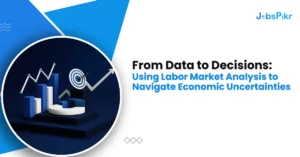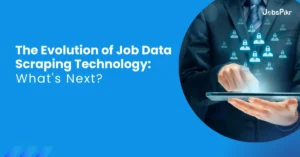Popular Job boards.
Often abused. Seldom understood.
What truly separates a successful job board from the subpar ones? The secret sauce.
Here we take a look at some of the main considerations and principles for anyone looking to launch a job board business. A successful one at that. One persevering stepping stone at a time. In this blog, JobsPikr takes a look at how you can build one of the most popular job boards in the market.
What is Your Niche?
Do you have a particular niche in mind? If not, don’t forget you are going up against some very significant competition.
The more popular job boards are spread across the domain. Generalist competitors battle hard for market share, but it’s the niche players who have the best chances to connect with and monetize their target market. If you have throat congestion, you’d go to an ENT and not a general physician, right? It is an extension of the same principle, in essence.
If you are looking to promote your job board to an existing community or market, this will certainly give you a head start. In this game, narrow but deep is generally better than wide but shallow.
Jobseekers Or Employers First?
This conundrum is as old as time.
It is a quintessential chicken or egg situation. Not for the most popular job boards. Some job boards tend to think of their job seekers as the ‘product’ that employers come to buy and as such focus on attracting job seekers.
But how do you attract job seekers if you don’t have jobs?
One option is to ‘backfill’ jobs onto your newly launched job board so you will have jobs on there from the outset. This involves taking a feed of jobs from an ‘aggregator’ site and means that job seekers will be redirected away from your website when they find a job they want to apply for. Many aggregators will pay you for each job seeker you send on a cost-per-click (CPC) basis.
The most established business model that popular job boards use involves monetising your job board by selling job listings.
But you will only have a satisfied customer if people apply for these jobs.
As such, it makes sense to focus on registering candidates before you start selling job listings. Patience, in most cases we have seen, is key.
Your Business Model: Free Or Paid? Freemium.
That’s right. The best job boards do this. Reel them right in and hook them on.
But we shall consider all possible permutations.
Are you looking to make money from the outset? Or build an engaged community first? Most job boards charge employers for job listings or access to a CV database. Others charge candidates for early access to the best jobs.
Whichever way you intend to monetize, you need to think about the unit economics around how you will attract job seekers and employers. At the end of the day, you want to be sure that you have a product or service that offers superior results or value to what already exists in the marketplace.
Quality tends to get paid. Nobody wants a free service that adds no value. Also, a premium model establishes authority. You can be held accountable. It is a glass-half-full-half-empty situation.
Whatever it is, be sure to do your research before you jump right in. Your target audience usually has all the answers to your queries.
What are Your KPIs?
Establishing some Key Performance Indicators (KPIs) is crucial in ensuring that you are hitting your goals. You’d be sitting on a gold mine of data: do some job board data analysis to make sure you use it optimally.
Here are some useful measures.
- Applications per job: Is a customer that doesn’t get any applications going to be a happy one?
Probably not. For that reason, applications per job may be the single most important KPI for a job board. At the same time, don’t forget that not all applications are equal and quality is better than quantity.
- Cost per application (CPA): How much does it cost you to generate each application? Some channels will cost more than others but you should have an idea of the average.
- Average order value (AOV): Let’s say your main revenue stream is going to be a 30-day job listing. The cost of this is likely to be your average order value or (AOV).
These are your top-level KPI metrics.
Understanding will give you a good idea of the unit economics that will drive your business.
Let’s say your AOV is 200 USD and you want to ensure you drive at least 10 applications per job to give your customer the best chance of hiring. If your CPA is $5you know that it will cost you around 50USD to deliver the desired number of applications (10x$5). That’s $50 of your $200 to deliver the desired number of applications, leaving $150 profit.
It never hurts to be prudent with money. How else will you build the best job board?
Other Lessons to Learn From The Most Popular Job Boards
- In general, one of the biggest points of dissatisfaction for job seekers is not receiving a response to their job applications. Finding a way to make sure employers respond to all applicants will increase your jobseeker satisfaction ratings.
- The average job-seeking phase is 3 months every 3 years. Make sure you squeeze the 3-month window for the opportunity it represents.
- Location is the #1 most important factor for job seekers when applying for a job. Use this filter judiciously.
Test the waters. Find your ground. Treat our suggestions as the Bible. It is a long way up. But the view at the job board zenith is worth it. We assure you.
The secret sauce? It is an amalgam of all that we’ve mentioned.
If you liked reading this as much as we enjoyed writing this, please share the love. We think you might enjoy reading this just as much.




